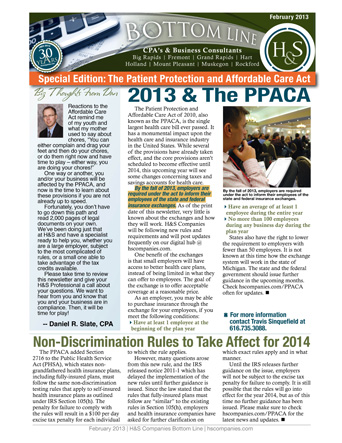
The health insurance premium credit is designed to make health insurance affordable to taxpayers whose household income is 100% to 400% of the federal poverty level.
The IRS issued final regulations on the health insurance premium credit scheduled to go into effect in 2014. Here are a few highlights:
- This coming June, the Supreme Court will rule on the constitutionality of the Affordable Health Care Act, and may throw the whole thing out.
- The credit is designed to make health insurance affordable to taxpayers whose household income is 100% to 400% of the federal poverty level (FPL). In 2011, the FPL for a two-person household was $14,710 and $22,350 for a four-person household. So, this credit will affect those with income up to $58,840 in a two-person household and $89,800 in a four-person household.
- Those who are eligible, will purchase coverage through the Affordable Insurance Exchange. The Exchange will then make a subsidized payment to the qualified health plan on behalf of the eligible person.
- The amount of the subsidy is based on information given at the time of enrollment and is the lesser of the premium for the qualified health plan, or the excess of the premium for the benchmark plan (the second lowest “silver plan”) over the applicable percentage of household income. The CBO estimates the average subsidy to be over $5,000 per year.
- At tax time, the individual will reconcile the actual credit for the tax year computed on the tax return with the amount of advanced payments. The difference becomes a tax due or refund. There is a cap on the repayment of $600-$2,500.
- An employee who is in an employer-sponsored plan, that is deemed as non-affordable, would also qualify for the subsidy. A plan is considered non-affordable if the employee is required to contribute 9.5% or more of his household income.
- Large employers will be penalized if even one fulltime employee is certified to receive the credit because the employer sponsored coverage does not provide minimum coverage or is unaffordable to the employee. The employer uses 9.5% of the employees wages instead of household income in figuring the penalty.
Please keep in mind, there will be more regulations to come clarifying how to calculate this credit and penalty. If you have any questions please contact Mike Farmer at 231.798.6503.


